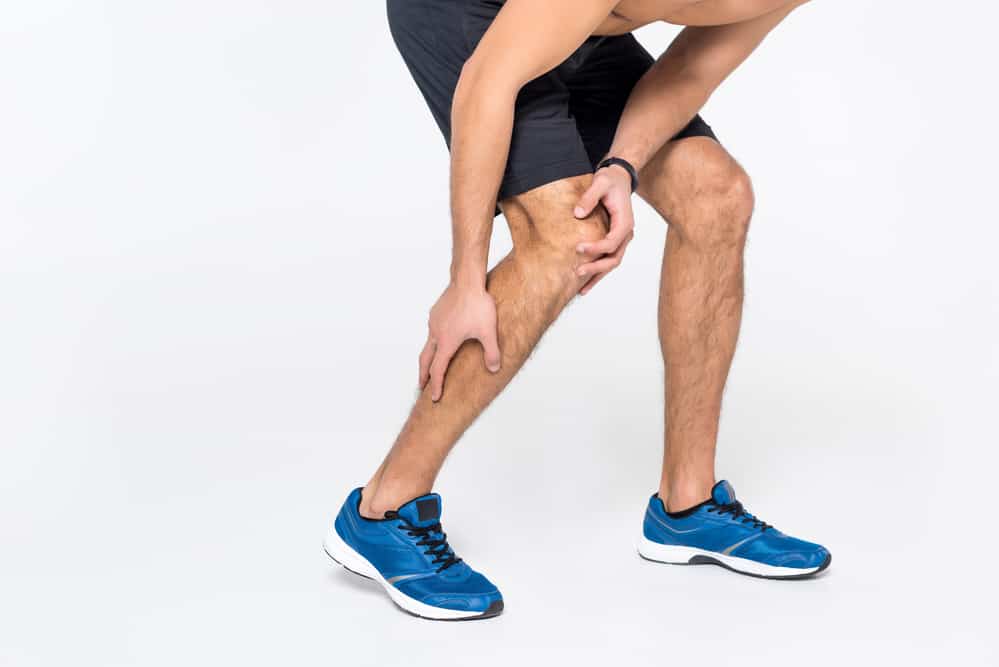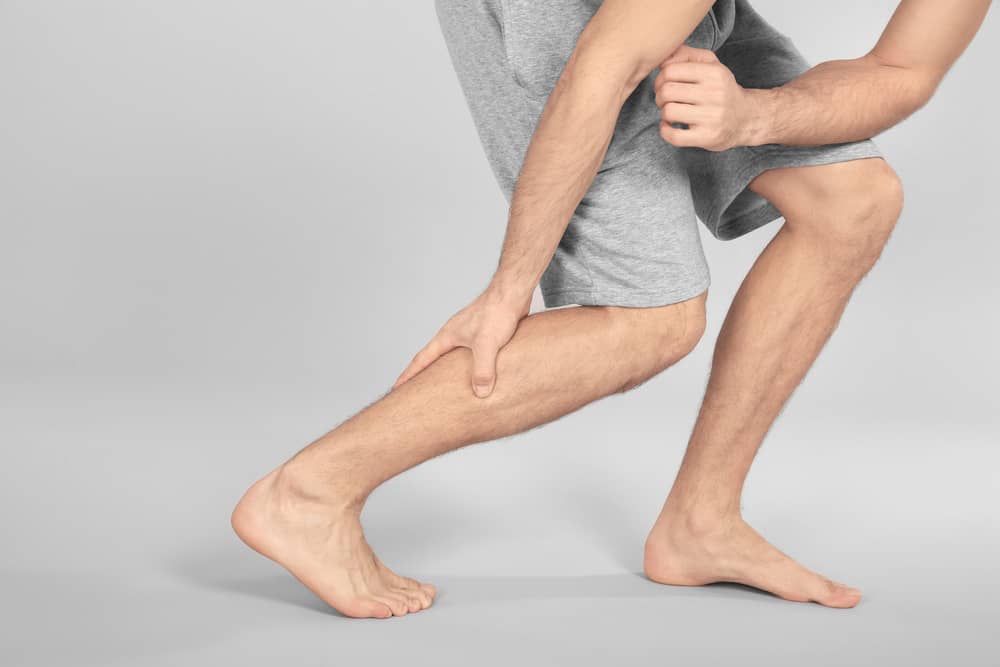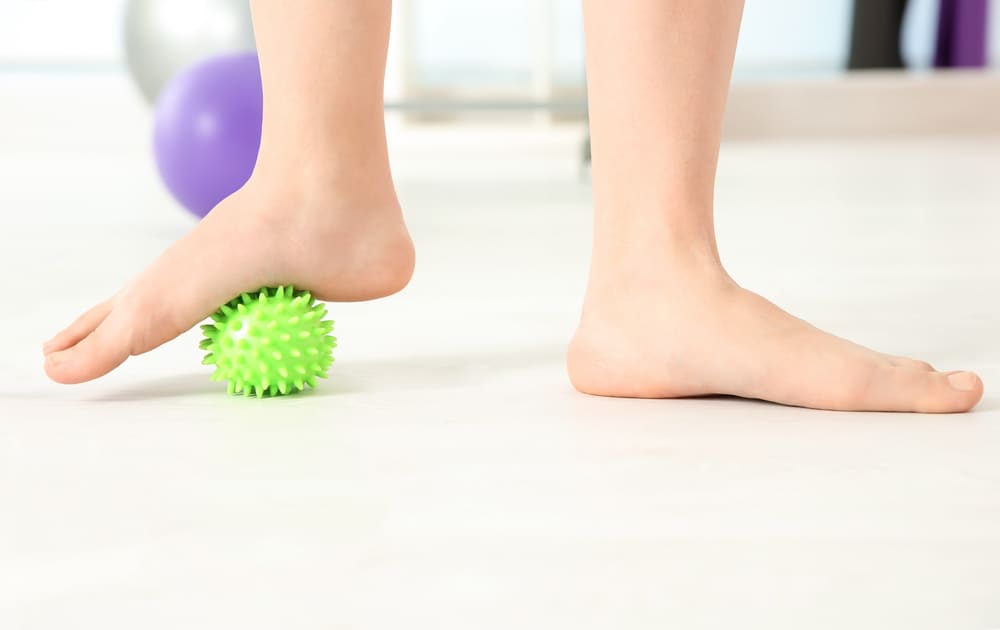Adjust your breathing technique. Fix your posture. Work on your stride.
All these thoughts and more pop across your mind as you run.
You’re in a never-ending battle just trying to get that mileage going, and things are already hard as they are without throwing leg pain into the mix.
Now, you’re left with one more nagging thought: Why do my legs hurt when I run?
From a bad knee to a stress fracture, it can be easy to confuse normal exercise aches with serious running injuries.

Why Do My Legs Hurt When I Run: Top 10 Reasons
When you’re running, it’s often hard to pinpoint where the trouble actually is. After all, you’re probably hurting from head to toe.
Yet, identifying the root cause is the first step towards healing.
So, let’s jump right in with 10 of the most common reasons for leg pain for amateur, professional, and elite runners:
1. You’re Suffering from a Shin Splint
The shin splint is medically known as the tibial stress syndrome, and it’s an inflammation in the connective tissue that keeps your muscles attached to your shinbone or the tibia.
The main symptom of shin splints is a throbbing pain on the lower leg below the knee. This pain can be even worse for people with a flat foot.
Although it’s not a serious injury, it can bring down your flexibility and make your running sessions uncomfortable.
The Solution
To deal with shin splints, you can use a compression sleeve with some ice packs till the injury goes away on its own.
Plus, taking non-steroidal anti-inflammatory drugs (NSAIDs) for a few days can help with mild cases.
However, you’ll still need to skip a few running sessions till you feel up to the exercise once again.
2. You’re Sore from Frequent Exercise
One of the most obvious reasons why your legs might be hurting you while you run is muscle soreness.
So, have you been pushing your workout limits lately?
Keep in mind that soreness is a cumulative symptom. You won’t get sore on the spot, but the pain peaks after a couple of days of high-intensity exercise.
This effect is common for a new runner who goes too hard, too fast. It’s often referred to as delayed onset muscle soreness or DOMS.
The Solution
It’s not unusual to experience quite a bit of soreness as a new runner. We’ve all been there at some point.
However, if the DOMS is keeping your muscles too stiff that you have trouble walking, you might want to ease up your workout intensity.
Start with a slower pace and take a break day after every major exercise day to give your muscles a chance to recover.

3. Your Muscles Are Cramping
Muscle cramps are hands down, one of the most common causes of limb pain during aerobic activities.
Here’s the kicker:
Muscle contraction is such a complex biological process that so many factors can throw the equation off balance.
For instance, low carbohydrate intake and dehydration can cause spasms. Additionally, electrolytes like calcium, potassium, or magnesium are crucial for contraction.
The Solution
To deal with a mild cramp during a run, you can sit down and massage it a bit. You’ll be ready to go in no time!
Of course, you can resort to the good old banana treatment before running sessions. Just understand that it’s not a magic fix.
You need to work on your pre-run meals and hydration levels for a while before you see significant improvement.
4. Your Muscles Are Strained
Overstretching a muscle beyond its natural range of motion can lead to small tears in the fiber. This all creates an inflammation that renders the whole area tender to the touch.
This muscle strain is what we call “pulling a muscle” in layman’s terms.
While running, you might pull your hamstrings, quadriceps, calf, or even groin. And yes, they’re all as painful as they sound!
If you’ve ever had one of those, you know they can linger around for weeks on end.
The Solution
While rest is crucial for healing a strained muscle, you still need to massage the area to increase blood flow through the torn fibers.
For serious cases of muscle strain, we’d recommend starting with a simple isometric contraction exercise before jumping back into the track.
Otherwise, you risk leaving scar tissue that could limit the muscle’s capacity and leave you at risk for a repeating injury.
5. You Have Flat Feet

The issue with running on fallen arches is that it isn’t as localized as you might think. Although the pain starts from the heel, it can make its way all the way up your legs with time.
Wonder why that is?
Since flat feet can often mess up your stride, you’ll tend to compensate in one way or the other, leading to a wrong running form.
If you push through the pain, you can unintentionally damage your tendons and ligaments in the long run.
The Solution
It’s not impossible to run with a flat foot. However, you’ll need to put in a bit of effort to avoid a plantar fasciitis injury or shin splints.
If you have a flexible foot, stability shoes might work best for you. Meanwhile, motion control insoles are a better fit for running on rigid feet.
Getting a professional gait analysis can help you understand your stride better and find the perfect shoe fit.
6. You Have a Bad Knee
Knee pain while running can be caused by a range of reasons, from an Iliotibial (IT) Band Syndrome to the infamous runner’s knee injury.
Runner’s knee is also known as the patellofemoral stress syndrome, and it starts with inflammation pain around the kneecap.
On the other hand, the pain from an injury in the IT Band feels like it’s coming from outside the knee.
The Solution
Icing the inflamed area after runs generally helps with symptomatic relief in the case of mild patellofemoral stress syndrome.
Sometimes, an IT injury is self-limited, which means that it resolves on its own after a few weeks of rest.
However, once the injury turns chronic, you might be prescribed painkillers and a compression sleeve.
7. Your Pain Is Only Skin Deep
If the pain came up with a change in outfits, I’d recommend taking a moment to ask yourself if this sensation is on a surface level only.
Sometimes, a simple chafe can resonate all across your legs and make you feel like you can’t run a step forward.
Sounds silly? It’s not.
You’d be surprised how often people blow pain from chafing way out of proportion, especially those blisters oozing blood.
The Solution
Make sure your running outfit is a synthetic and moisture-wicking material. Unlike popular belief, cotton isn’t a runner’s best friend.
You also want to get the right fit. Oversized pants can rub against your skin, and extremely tight leggings aren’t any better.
If you need to, use blister tape or moleskin pads in the areas where you chafe the most. Just remember to dry your skin before gearing up!
8. You Have a Case of Tendonitis
Tendonitis is the tendon’s version of a muscle sprain injury. It’s basically an inflammation from overuse, especially when people overcompensate for a skewed stride.
How can you spot it?
Begin to suspect an inflammation of the Achilles tendon if you feel mild pain in the lower leg right above the heel.
On the other hand, if the pain is located on the side of the hip, it might be the Gluteal tendon that’s inflamed.
The Solution
Depending on the severity of the case, you can resort to different remedies, from applying ice packs to getting physical therapy.
Ideally, massaging the area might help relieve the pain momentarily, but you’ll still need to take a few days off from running.
Going for a session of foam rolling after your runs can also help you stay on top of the inflammation.
9. You’ve Been Exposed to a Stress Fracture
Stress fractures are a common type of overuse injury that you can get from intense aerobic exercise.
This happens when your muscles are too exhausted to absorb repetitive shocks. Your bones are then left exposed to cracking.
If you suffer from a sharp pain in the lower leg during a run, it might be a stress fracture to the tibia or the metatarsals.
The Solution
Gradually increasing the intensity of your workout sessions helps your bones build up stamina to withstand a larger loading force.
As a plus, fixing any existing Vitamin D deficiencies can enhance the bone density in the lower leg.
Even if the pain is tolerable, never run on a stress fracture. Instead, we recommend you stop the workout immediately and get a check-up.
10. You Lack the Required Endurance
Aerobic exercise can be hard at first, and maybe your body isn’t prepared for running just yet.
Keep in mind that endurance isn’t just a physical attribute that describes the muscle’s acclimation to intense exercise.
It’s also your mental endurance to run. How ready you feel can make or break your threshold to fatigue.
Still not convinced?
A recent study found that brain neurochemistry plays an important role in fatigue during physical activities.
The Solution
Nothing defeats leg pain like a happy run. That’s why we highly recommend that you think of your runs as a fun activity instead of a chore.
Not only will this help you find the motivation to stay on track, but it’ll also boost your mental endurance.
Find a few serene terrains and shift them up frequently to keep your running sessions fresh and interesting.
Tips and Tricks to Prevent Running Injuries

A dime’s worth of prevention can save you a fortune treating a running injury.
Remember that pain is more often than not the body’s way of letting you know that something is wrong.
Here are some tips and tricks that you can apply to your daily exercise routine to ward off the pain:
Never Skip Running Warm-Ups
As long as we’re on the topic of injury prevention for runners, you’ll never avoid getting this advice.
Why is that?
Well, warm-up stretches can get the blood flowing to your muscles with the oxygen, electrolytes, and energy needed to keep your legs going.
Spruce Up Your Workout With Cross-Training
While running is all about aerobic endurance, you still need to spice up your exercise routine here and there.
Look into swimming or cycling classes once every week.
The right mix of cross-training and strength workouts can boost your flexibility and strengthen your muscle fibers.
Cut Down on Smoking
Smoking is obviously bad for your health, from a reduction in lung capacity to an increased risk of cancerous tumors.
Unfortunately, that’s not all.
Buerger’s disease (linked to tobacco in cigarettes) can reduce the blood flow to the limbs, leading to cramps.
Go for a Physical Check-Up
Home remedies are great, and experience is a reliable source, but they’ll never replace medical advice from health care professionals.
Odds are, your results will come back normal, but it’s still better to be safe than sorry!
Even the simplest tests like lipid profile, blood pressure, trace elements, and vitamin levels can help you stay on top of any injury before it happens.
Work on Your Breathing Technique
A large part of building aerobic endurance is getting your lung’s capacity to match the demand from the skeletomuscular system.
That’s where breathing exercises come in handy for runners.
Try out diaphragmatic breathing by engaging your stomach muscles as you inhale to open up your chest cavity. That’s all the precious oxygen your muscles need to avoid leg cramps!
Don’t Rush Your Progress
Many running injuries happen because the runner wanted to take things too fast. This mistake also happens when people skip training days and want to make up for the lost time.
Yet, it’s very counterproductive.
Know the difference between pushing yourself gradually and damaging your muscles. For competitive running, set a healthy and balanced training plan to meet your goals realistically.
Why Do My Legs Hurt When I Run FAQs
Check out some of the frequently asked questions about painful runner’s legs:
Q: Does cold water help reduce soreness?
A: Both hot and cold showers can help with sore muscles. However, a cold shower might be more suitable if you also have blistered skin.
If you use ice, make sure it’s not in direct contact with your skin. Ice burns are a thing!
Q: Can the Walk-Run method help with leg pain?
A: Yes, interval running can help you rest adequately between sprouts of high-intensity workouts.
As a plus, it’s a very common method that helps athletes complete marathons at a safe pace.
Q: What does foam rolling do?
A: Foam rolling works to reduce pain, relieve stress, and increase flexibility by massaging the fascia connecting muscles to bones and tendons.
On its own, it might not be enough, but it fits with a well-rounded stretching routine.
Q: How long does it take to recover from a running injury?
A: There’s no hard and fast rule when it comes to healing periods. A simple sore muscle can heal in a couple of days, while other injuries like stress fractures can take up to six months.
It all comes down to getting a professional diagnosis and sticking to your treatment plan.
Final Thoughts On Why Do My Legs Hurt When I Run
Every runner probably asks themselves at least once in their lifetime: “Why do my legs hurt when I run?”
It could be a range of reasons, including simple training aches, soreness, strains, tendonitis, blistering, and stress fractures.
The key lies in identifying the problem as soon as the pain pierces your running sessions.
But don’t let the worry take over.
As long as you’re being careful, regular running can be one of the best things you can do for your body.
The more you run, the better you’ll be able to pick up on the warning signs.
So, take a deep breath, and keep on running!
